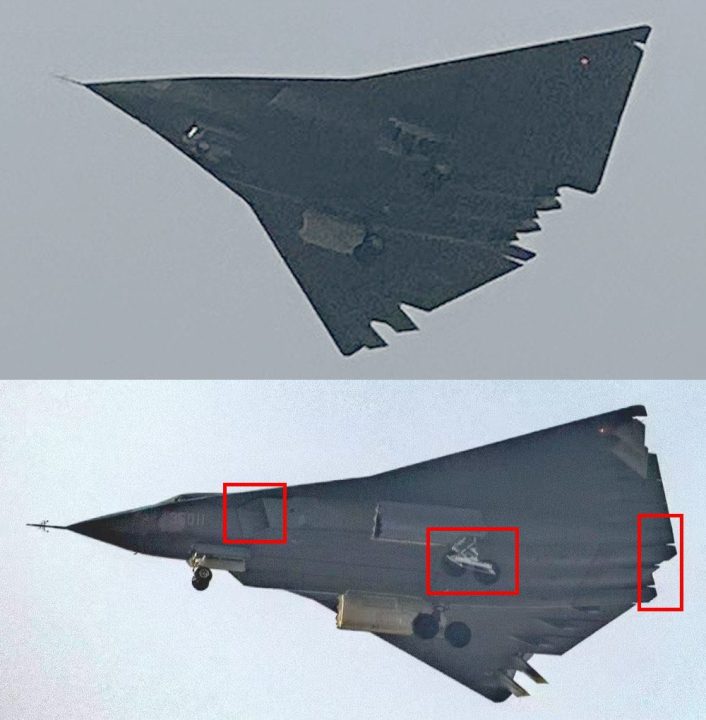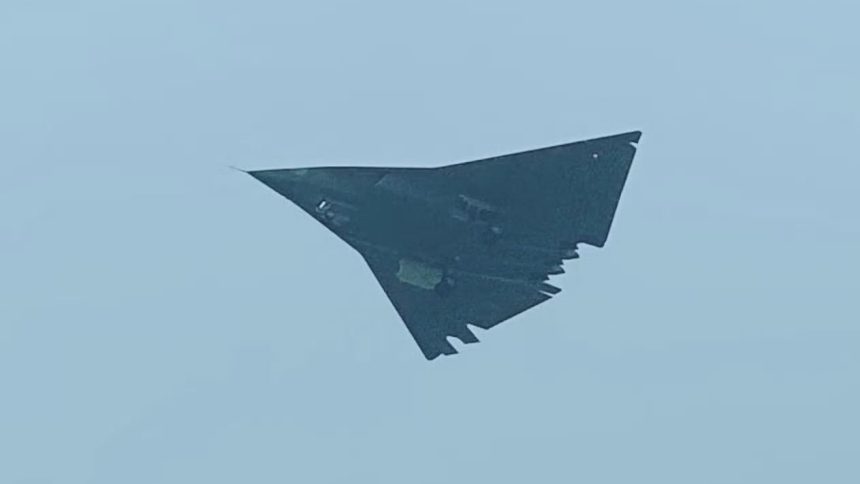Several images showing what appears to be the second prototype of the J-36 heavy fighter have started circulating online.
Several images showing what appears to be the second prototype of the J-36 heavy fighter have started circulating online. The second airframe seems to retain the core configuration of its predecessor, such as the extensive control surfaces on the aft of its fuselage and its signature three engines, while introducing several notable refinements ranging from intake geometry to landing gear configuration.
The photos of the second prototype come just over 10 months after the first, whose images started circulating on Dec. 26, 2024.
As it seems, the rumoured 2nd J-36 prototype was finally revealed showing some interesting changes:
1. the side intakes are revised (now a DSI (?), formerly caret)
2. redesign main landing gear (now two wheels side by side rather than tandem).
3. exhausts looks like TCV pic.twitter.com/qK63434yiS
— @Rupprecht_A (@RupprechtDeino) October 28, 2025
It is possible that the second prototype is exploring alternative configurations, rather than committing towards a final design. However, some observers on Chinese social media have hinted that this second prototype is more representative of the actual final product and that the first was more likely a concept demonstrator.

Structural differences
Visually, the most obvious change of the new airframe is the engine’s nozzles. The first prototype had a trough-like nozzle arrangement oriented towards a more stealthy, blended-exhaust approach, much like the ones of the Northrop YF-23 that competed in the ATF (Advanced Tactical Fighter) program.
The second prototype instead adopts a F-22 style nozzle, appearing to be more 2D-TVC (Thrust Vectoring Control) oriented. If the final solution is going to be full 2D TVC for all three of the aircraft’s engines, it is likely that they are willing to compromise a certain degree of stealthiness for greater maneuverability and control.
Some more … pic.twitter.com/UfIcgEOUWj
— @Rupprecht_A (@RupprechtDeino) October 28, 2025
In addition, the configuration of the side intakes seems to have been changed from the caret-shaped ones on the first prototype. The aircraft instead adopted DSIs (Diverterless Supersonic Inlets) or even potentially a in-between of a DSI and Caret intakes, like that of Shenyang’s Next-Generation fighter.
The images of the second prototype do not offer enough detail to see the characteristic ‘bump’ of a DSI within the intake, and thus confirm that the jet now features three DSIs. However, the forward sweep on the intake definitely shows that a change has been made on its geometry.
So far, there have been no photos showing the topside of the second J-36, although it can be assumed that it still retains the third DSI on top of the fuselage for the third engine. There is still no confirmation on what engines the J-36s has been using.
Suspected 2nd J-36 prototype.
As rumoured, some changes visible, notably refined side intakes (DSIs? I always felt the carets on 1st prototype were a bit temporary…) and revised main landing gear (two wheels dual rather than tandem).
Still looks like 3 engines. pic.twitter.com/UykODCpInT
— Rick Joe (@RickJoe_PLA) October 28, 2025
The third major change that is identifiable from the new images is the main landing gear configuration. The two wheels on the new airframe’s main gears are arranged in a parallel fashion, whereas it was arranged in a tandem fashion (like that of the Su-34) on the first prototype. This modification could potentially allow for more space inside the aircraft’s weapon bays.
The new airframe is, of course, unlikely to be fully representative of what a final production variant may look like. Previous aircraft like the J-20 also evolved significantly from its original prototype before entering serial production.









